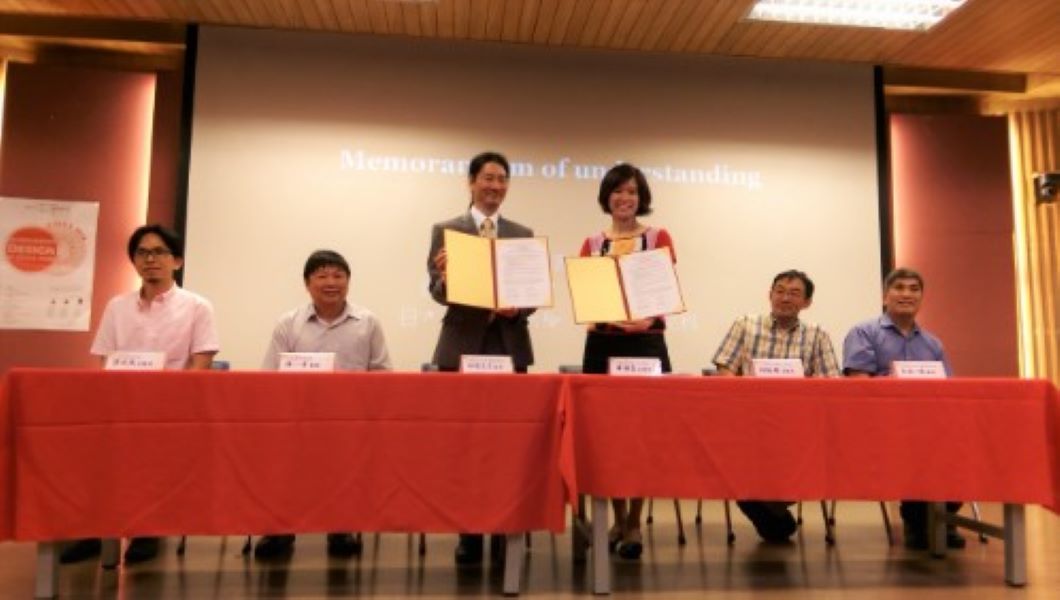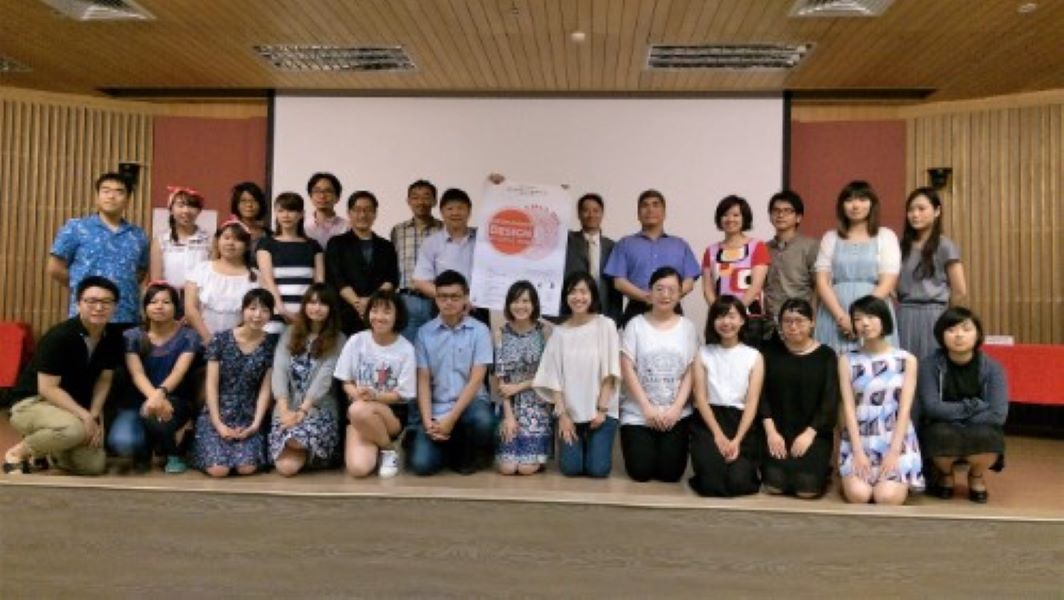College of Hakka Studies signs a memorandum of understanding (MOU) with Keio University to increase exchanges
College of Hakka Studies signs a memorandum of understanding (MOU) with Keio University to increase exchanges
By Chen Hsi-An

Photo by Chen Hsi-An
The College of Hakka Studies and Institute of Applied Arts, College of Humanities and Social Sciences at NCTU signed an MOU of academic cooperation with the Graduate School of Media Design at Keio University (KMD) on August 5th. Hopefully, resources and students of these two prestigious universities in Taiwan and Japan can be gathered to create more innovative studies and contribute to society.
Cooperation of teaching and research to reinforce innovation in design
The Graduate School of Media Design (KMD) was established in 2008. “Contribution to society and innovation” is one of their core values. This school has professors in diverse disciplines such as visual design, Economics, information technology, and interaction between humans and machinery. They believe design includes areas like business event planning, industrial design, local tourism, and so on. In teaching, they focus on innovation in design, technology, management, and policy making. KMD is devoted to cultivating students with outstanding designing skills and a global perspective. In addition, they spare no effort to innovate and bring positive influence to society as well as propagate social values through design.
This MOU of academic cooperation includes exchanges of professors, students, and researchers to participate in seminars and other academic activities organized by the two universities. There will be opportunities for joint studies or cooperative teaching, and sharing publications and research results. The MOU was signed by Prof. Sonia Huang, Director of the Department of Communications and Technology at NCTU, Chen Yi-Ping, Professor of the Institute of Applied Arts at NCTU, and Masa Inakage, Director of the Keio Media Design Research Institute.
According to Prof. Sonia Huang, teaching fields and goals of KMD are pretty similar to those of the Department of Communications and Technology in the College of Hakka Studies. She expected the two parties to work together to produce more innovative study results. Chen Yi-Ping believed that the two universities share the common goal of making the world a better place by solving all kinds of social problems with “innovation of design.” This is also why education is important. As for plans of future exchanges, Chen pointed out that the two parties will definitely work together on proper issues and areas of expertise.

Photo by Chen Hsi-An
Results of workshop show students’ aesthetics and innovation
Other than signing the MOU, the two universities also co-organized a workshop. In the five-day workshop, some 30 students were divided into four groups to come up with new ideas about “innovative Hakka design” and “design for disasters.” Results were released on August 5th.
For the “design for disasters” theme, students designed games for children to learn how to prevent and prepare for disasters as well as take shelter in disasters. They also made various emergency backpacks. For the “innovative Hakka design” theme, students created interactive games of figurines and beautiful concept graphics combining Japanese and Hakka cultures. All professors and the audience present were so impressed by students’ comprehensive works within such a short period of time that they had to give their best compliments.
Another event of the day was a keynote speech of “telling a story of your interactive design” by Professor Inakage. He talked about what a touching story and attractive design should be like in his speech, and introduced KMD at the end to encourage students to study there. He also looked forward to exchanging views with students at NCTU.
According to Associate Professor Hsu Chun-Cheng of the Institute of Applied Arts, students get to experience different cultures and academic activities in this kind of international exchanges between universities. He also encouraged students to study abroad for diplomas or become short term exchange students using their universities’ resources.





